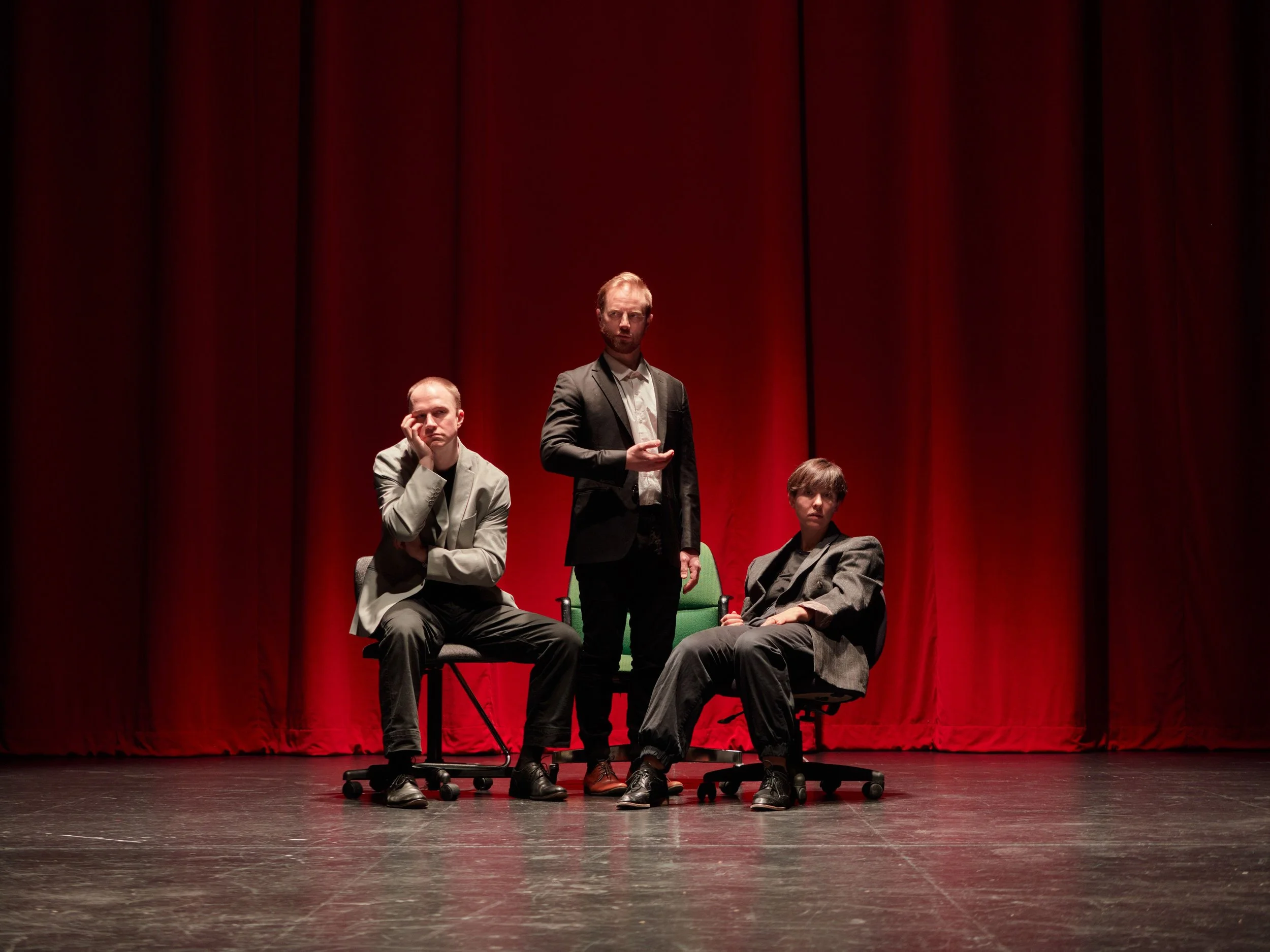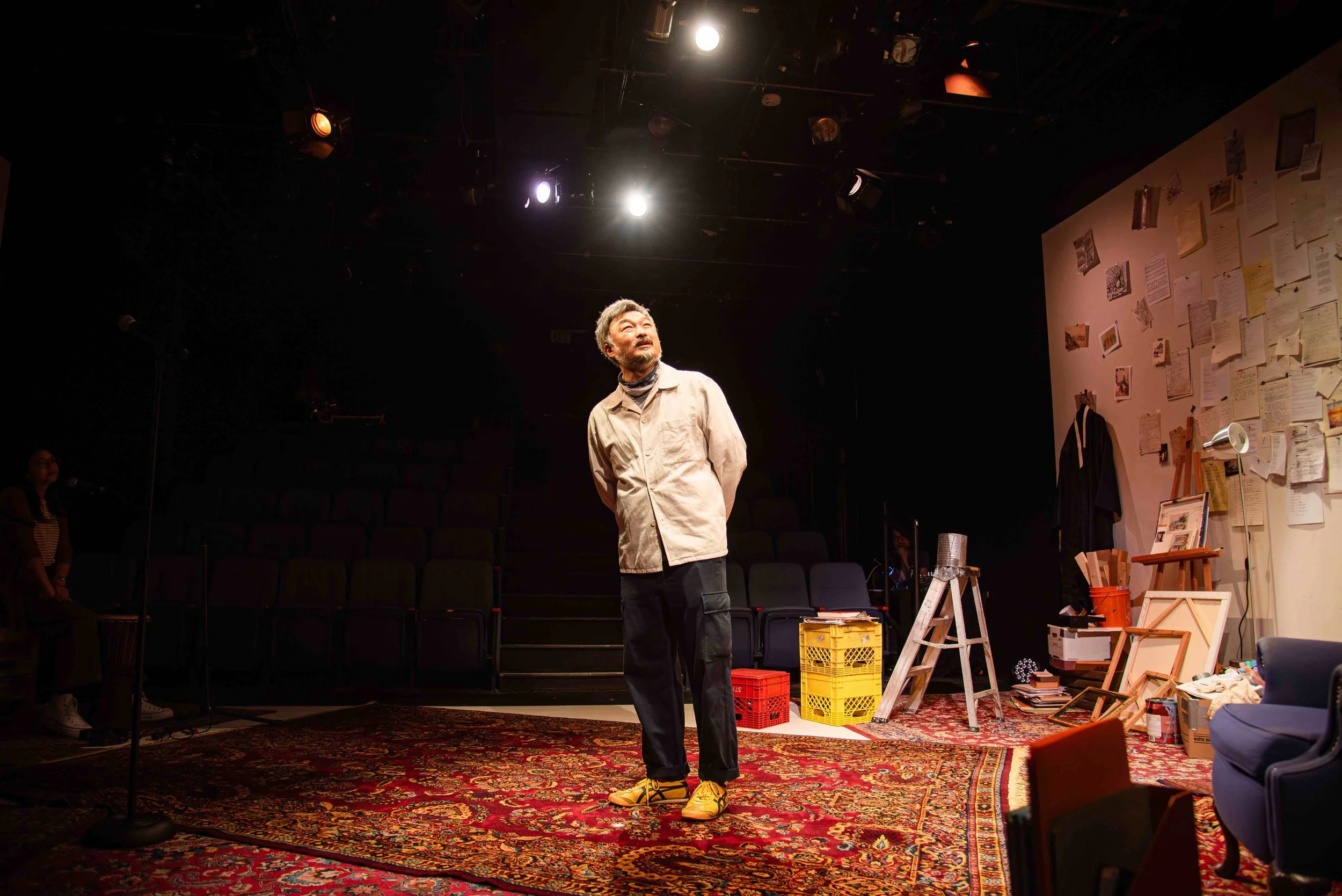Untitled Peter Tripp Project evokes the effects of sleep deprivation
The interdisciplinary experience is inspired by the New York City radio DJ who stayed awake for eight-and-a-half days straight
Untitled Peter Tripp Project
Pi Theatre presents Curtain Razors’ Untitled Peter Tripp Project as part of its Pi Provocateurs Series from May 4 to 6 at 7:30 pm and on May 6 at 2 pm at a secret location
SOME PEOPLE WILL do anything for attention—and it was like that long before Instagram and TikTok came along. For Peter Tripp, a New York City radio DJ who was on air in the 1950s, the desire for fame pushed him to pursue an outrageous publicity stunt. In January 1959, he held a charity “wake-athon” inside a glass booth in Times Square, broadcasting his show daily for three hours—and going without sleep for about eight-and-a-half days straight, a total of 201 hours and 10 minutes.
Whenever it looked like he might be ready to doze off, nurses would shake him awake; doctors played games with him and did various tests on him. He began to hallucinate after a few days, seeing things like mice and spiders, hearing voices, and searching for money that wasn’t there. During the last 66 hours of Tripp’s promotional schtick, physicians gave him drugs to keep him awake while scientists monitored him closely. Once he gave in, he crashed for 13 hours and 13 minutes. Some say he experienced lasting psychological consequences as a result of the exercise.
Tripp gained notoriety, alright, but his newfound celebrity led to a criminal investigation into commercial bribery. Tripp was indicted in the “payola” scandal, in which DJs and others took bribes to play certain records, in 1960.
It was Tripp’s self-destructive act of sleep deprivation that gripped the imaginations of artists Johanna Bundon, Jayden Pfeifer, and Lee Henderson. They’re the team behind Untitled Peter Tripp Project, an immersive interdisciplinary piece produced by Regina’s Curtain Razors. Being presented in Vancouver by Pi Theatre as part of its Pi Provocateurs Series, the show takes place in a secret location that ticket holders will only be privy to days beforehand.
Speaking to Stir from somewhere near Revelstoke on the drive from Saskatchewan to B.C., Pfeifer explains that Untitled Peter Tripp Project is not a biography of the man who didn’t sleep.
“What was so interesting about his story wasn’t just the fact that he was staying awake but that he was staying awake on air, both trying to break a world record and also doing a sort of performance and getting a big amount of notoriety for doing it,” Pfeifer says. “Johanna and myself and Lee spent the last five years investigating the themes around that idea of exhaustion and the compulsion to perform and what happens to the body and the brain through that kind of endurance of sleeplessness. We were reading about the investigation into the effect that has on a person and then started to think about our own relationship to the public self and the private self and the need to perform.
“What was great about the story for all of us was that it is couched in this broadcast culture—radio broadcast: You’re performing and you have to be ‘on’ while not ever knowing if anyone is listening,” he adds. “It’s such rich terrain to explore.”
Jayden Pfeifer, Untitled Peter Tripp Project.
Pfeifer, Henderson, and Bundon (who perform the piece along with artist Tess Degenstein) all have distinct artistic practices, and Untitled Peter Tripp Project integrates many of their varied approaches. Endurance-based movement, improvisational and written text, projected images, light, breath work, radio-frequency programming, and the looping of audio recordings are just some of the elements that make up the sensation-rich work. Henderson constructed some of the technical gear that the performers use throughout to help evoke altered forms of consciousness. Exhaustion itself becomes a character.
“The piece is very much built on vignettes or images that emerge then dissolve into another vignette,” Pfeifer says. “There’s no narrative that…carries the whole piece through. We’re evoking different vignettes, images, ideas, and sounds and exposing the audiences to fractured sound or movement or breath or lighting to create a feeling—that’s what we’re after in an audience experience.”
Unlike a conventional theatre performance, audiences aren’t sitting in chairs or facing a particular direction; rather, it’s an open space where performers and viewers are free to roam wherever they want.
“They can change their perspective at any given time,” Pfeifer says. Without giving too much away, he adds that viewers may not be sure where the next sound, movement, or action may come from. “One of the things we learned about sleeplessness or sleep deprivation is that it very quickly starts to create a hallucinogenic state, a questioning of what’s happening or what’s real.”
What is certain is that no performers were harmed as a result of sleep deprivation during the creation of Untitled Peter Tripp Project.















